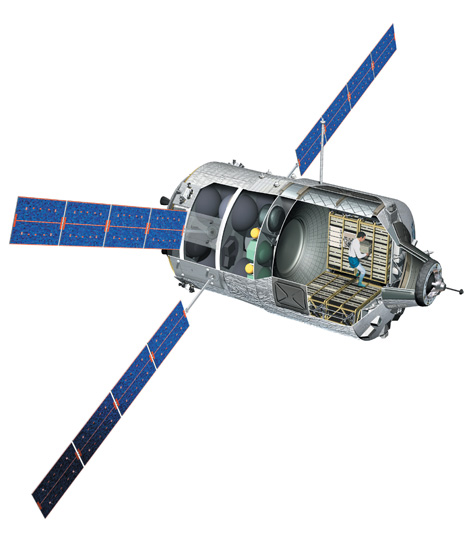Wolfgang Paetsch, head of EADS Astrium's ATV programme
To boldly cargo: The head of the team behind the ESA’s space truck ponders its possible manned future. Stuart Nathan reports
Late last month, the drama, fire and thunder of a heavy rocket launch returned to the European Space Agency’s spaceport in Kourou, French Guiana, as an Ariane 5 launcher thrust its most massive cargo, the Automated Transfer Vehicle (ATV) Johannes Kepler, skywards on the start of its four-month mission to the International Space Station (ISS).

Built by EADS Astrium, the ATV is an unmanned freighter, designed to carry supplies and equipment up to the ISS. Johannes Kepler, named after the 17th-century German mathematician and astronomer, is the second of the projected five-strong ATV fleet; its predecessor, Jules Verne, travelled to the ISS in 2008.
During the final phases of the run-up to launch, EADS’ director of production and development, Wolfgang Paetsch, spoke to The Engineer about Johannes Kepler, its mission and the future of the ATV.
’You can regard Jules Verne as the prototype ATV and Johannes Kepler, ATV2, as the first production model,’ Paetsch said. This led to a very different mission profile for the two modules: Verne’s flight incorporated a series of pre-docking tests and checks, which Kepler, as the first ’routine’ flight, will not need to undergo.
Register now to continue reading
Thanks for visiting The Engineer. You’ve now reached your monthly limit of premium content. Register for free to unlock unlimited access to all of our premium content, as well as the latest technology news, industry opinion and special reports.
Benefits of registering
-
In-depth insights and coverage of key emerging trends
-
Unrestricted access to special reports throughout the year
-
Daily technology news delivered straight to your inbox







Water Sector Talent Exodus Could Cripple The Sector
Maybe if things are essential for the running of a country and we want to pay a fair price we should be running these utilities on a not for profit...